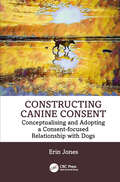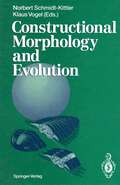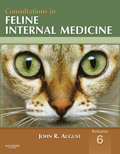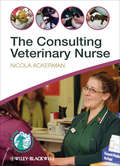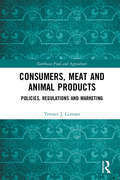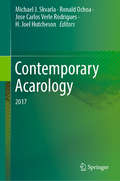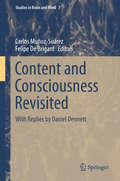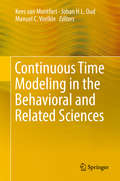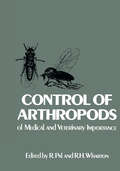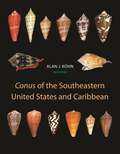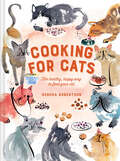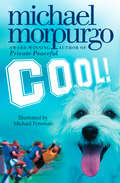- Table View
- List View
Constructing Canine Consent: Conceptualising and adopting a consent-focused relationship with dogs
by Erin JonesThe concept of canine consent is far more than simply a buzzword in modern dog training practices. In its current form, consent is a distinctly human concept, designed by humans and for humans. Looking beyond species boundaries can help us not only consider concepts of canine consent and autonomy, but it can also help us to apply these concepts in our everyday interactions with dogs, which is fundamental for any professional working with dogs as well as for everyday dog caregivers. This canine-indexed definition of consent includes a model of five major categories: Touch/interaction-based consent, cooperative care using learned consent behaviours, activity consent, consent-based learning, and substitutive consent. These categories involve a two-way communication system, integration of salient choices, teaching consent behaviours and incorporating existing training protocols that adhere to the Humane Hierarchy of best practices, and an evaluation of dependent decision-making in extenuating circumstances. This book aims to merge the existing literature and new understandings about canine consent to paint a complete picture. It will challenge the current expectations of dogs and dog behaviour in our society with an intention of considering their perspectives, experiences, and emotional needs. It will be important reading for veterinary professionals, dog trainers and behaviourists, those involved in work with therapy dogs, and anybody working with or caring for dogs.
Constructing Canine Consent: Conceptualising and adopting a consent-focused relationship with dogs
by Erin JonesThe concept of canine consent is far more than simply a buzzword in modern dog training practices. In its current form, consent is a distinctly human concept, designed by humans and for humans. Looking beyond species boundaries can help us not only consider concepts of canine consent and autonomy, but it can also help us to apply these concepts in our everyday interactions with dogs, which is fundamental for any professional working with dogs as well as for everyday dog caregivers. This canine-indexed definition of consent includes a model of five major categories: Touch/interaction-based consent, cooperative care using learned consent behaviours, activity consent, consent-based learning, and substitutive consent. These categories involve a two-way communication system, integration of salient choices, teaching consent behaviours and incorporating existing training protocols that adhere to the Humane Hierarchy of best practices, and an evaluation of dependent decision-making in extenuating circumstances. This book aims to merge the existing literature and new understandings about canine consent to paint a complete picture. It will challenge the current expectations of dogs and dog behaviour in our society with an intention of considering their perspectives, experiences, and emotional needs. It will be important reading for veterinary professionals, dog trainers and behaviourists, those involved in work with therapy dogs, and anybody working with or caring for dogs.
Constructional Morphology and Evolution
by H. SchäferConstructional morphology explains features of organisms from a constructional and functional point of view. By means of physical analysis it explains the operational aspects of organic structures - how they can perform the activities organisms are expected to fulfil in order to survive in their environment. Constructional morphology also explains options and constraints during the evolution determined by internal constructional needs, ontogenetic demands, inherited organizational preconditions and environmental clues.
Consultations in Feline Internal Medicine, Volume 6 - E-Book
by John R. AugustCompletely revised and updated with 80 all-new chapters covering the most important information on current diagnostic, treatment, and preventive challenges facing feline practitioners today, Consultations in Feline Internal Medicine is an invaluable addition to every small animal clinician’s library. Full-color illustrations and expert contributions help you master and apply the latest advances in feline nutrition, emerging diseases, pet overpopulation, advanced imaging, and more with a comprehensive, clinically relevant approach. More than 100 worldwide leaders in small animal practice provide expert insight across the full spectrum of feline internal medicine. Extensive references make it easy to find additional information about specific topics most important to your practice. Current, evidence-based coverage reflects the latest findings and reports on pressing topics such as: Upper Respiratory Tract Aspergillosis Exocrine Pancreatic Insufficiency Diagnostic Imaging of the Ear Cardiac Blood Tests Urological Interventional Techniques A new section on feline nutrition highlights the impact of nutritional considerations on feline health. A dynamic full-color design, incorporating hundreds of NEW illustrations and tables, clarifies concepts and helps you interpret clinical data.
The Consulting Veterinary Nurse
by Nicola AckermanThe Consulting Veterinary Nurse is an invaluable source of information for all veterinary nurses setting up and conducting their own nursing clinics in small animal practice. From the basics of setting up the consulting room to running and marketing individual clinics, this book provides a comprehensive coverage of the role of the consulting veterinary nurse. A large section of the book details specific clinics run by nurses, including nutritional assessments, behavioural clinics, puppy parties, seasonal information campaigns, senior pet clinics and medical clinics for a full range of conditions from arthritis and dental problems to epilepsy and cancer. A chapter specifically on rabbit clinics is also included. Written by an experienced senior veterinary nurse, this is a vital guide for all veterinary nurses seeking to develop their consulting role and contribute effectively to the long-term success of their practice. KEY FEATURES Provides a comprehensive guide to the role of the consulting veterinary nurse Details specific nutritional, medical and behavioural clinics run by nurses Includes advice on presentation, marketing and communicating with clients Discusses client compliance and internal procedure and protocol Contains sample diet history sheets and unit conversion charts for use in practice Endorsed by the British Veterinary Nursing Association
The Consulting Veterinary Nurse
by Nicola AckermanThe Consulting Veterinary Nurse is an invaluable source of information for all veterinary nurses setting up and conducting their own nursing clinics in small animal practice. From the basics of setting up the consulting room to running and marketing individual clinics, this book provides a comprehensive coverage of the role of the consulting veterinary nurse. A large section of the book details specific clinics run by nurses, including nutritional assessments, behavioural clinics, puppy parties, seasonal information campaigns, senior pet clinics and medical clinics for a full range of conditions from arthritis and dental problems to epilepsy and cancer. A chapter specifically on rabbit clinics is also included. Written by an experienced senior veterinary nurse, this is a vital guide for all veterinary nurses seeking to develop their consulting role and contribute effectively to the long-term success of their practice. KEY FEATURES Provides a comprehensive guide to the role of the consulting veterinary nurse Details specific nutritional, medical and behavioural clinics run by nurses Includes advice on presentation, marketing and communicating with clients Discusses client compliance and internal procedure and protocol Contains sample diet history sheets and unit conversion charts for use in practice Endorsed by the British Veterinary Nursing Association
Consumers, Meat and Animal Products: Policies, Regulations and Marketing (Earthscan Food and Agriculture)
by Terence J. CentnerThis book addresses the production practices employed in the production of food animals and animal products that enable marketers to sell a variety of products to meet consumer demand. Food animal production practices have come under increased scrutiny by consumers who object to inputs and practices. The industry has been a proponent of using technologies to reduce production costs, resulting in lower-priced meat and animal food products, and now consumers are starting to look at other objectives. This book considers the key issues of concern to consumers, including the treatment of animals, the use of antibiotics, feed additives and hormones, and how these are monitored, regulated, and communicated to consumers. It also reviews labeling and information provided to consumers, including organic, genetic engineering, welfare standards, and place of origin. While the main focus is on the United States, there are descriptions of European practices and legislation. Overall, it aims to provide an objective and balanced appraisal, which will be of interest to advanced students and researchers in agricultural, food and environmental economics, law and policy, and animal production and welfare. It will also be very useful for early career professionals in the food and agricultural sectors.
Consumers, Meat and Animal Products: Policies, Regulations and Marketing (Earthscan Food and Agriculture)
by Terence J. CentnerThis book addresses the production practices employed in the production of food animals and animal products that enable marketers to sell a variety of products to meet consumer demand. Food animal production practices have come under increased scrutiny by consumers who object to inputs and practices. The industry has been a proponent of using technologies to reduce production costs, resulting in lower-priced meat and animal food products, and now consumers are starting to look at other objectives. This book considers the key issues of concern to consumers, including the treatment of animals, the use of antibiotics, feed additives and hormones, and how these are monitored, regulated, and communicated to consumers. It also reviews labeling and information provided to consumers, including organic, genetic engineering, welfare standards, and place of origin. While the main focus is on the United States, there are descriptions of European practices and legislation. Overall, it aims to provide an objective and balanced appraisal, which will be of interest to advanced students and researchers in agricultural, food and environmental economics, law and policy, and animal production and welfare. It will also be very useful for early career professionals in the food and agricultural sectors.
Contemporary Acarology: 2017
by Michael J. Skvarla Ronald Ochoa Jose Carlos Verle Rodrigues H. Joel HutchesonThis book gathers papers presented at the annual meetings of the Acarological Society of America (ASA), jointly organized with the Entomological Society of America. The ASA plans to publish presentations from its annual meetings on a yearly basis; this book represents the first in the series.
Contemporary Studies on Fish Feeding (Developments in Environmental Biology of Fishes #7)
by Charles A. Simenstad Gregor M. CaillietGUTSHOP '84 was the fourth in a series of workshops on various aspects of fish feeding (Table 1). Initially, the organizers merely invited regional (Pacific Northwest) fisheries scientists to share, and possibly develop mutual solutions to, the many technical problems associated with trying to obtain meaningful, quantitative information from fish stomach contents, and the subsequent statistical treatment and interpretation of the multivariate data. Since then, although not explicitly based upon any internal cycle, these scientists and increasingly more and more dispersed colleagues continued to congregate for workshop deliberations every two or three years. From the 49 attendees at the first workshop, the number of participants had grown to 65 at GUTSHOP '78, and 107 at GUTSHOP '81. By the third workshop, we were drawing scientists from across the U. S. and Canada, and from as far away as Norway. The topical content of the workshops has also evolved from the predominantly technical aspects of fish collection and stomach contents processing techniques, statistical analysis, and data manipulation and presentation to considerations of theoretical ecology, bioenergetics, and behavior.
Content and Consciousness Revisited: With Replies by Daniel Dennett (Studies in Brain and Mind #7)
by Carlos Muñoz-Suárez Felipe De BrigardWhat are the grounds for the distinction between the mental and the physical? What is it the relation between ascribing mental states to an organism and understanding its behavior? Are animals and complex systems vehicles of inner evolutionary environments? Is there a difference between personal and sub-personal level processes in the brain? Answers to these and other questions were developed in Daniel Dennett’s first book, Content and Consciousness (1969), where he sketched a unified theoretical framework for views that are now considered foundational in cognitive science and philosophy of mind.Content and Consciousness Revisited is devoted to reconsider the ideas and ideals introduced in Dennett’s seminal book, by covering its fundamental concepts, hypotheses and approaches and taking into account the findings and progress which have taken place during more than four decades. This book includes original and critical contributions about the relations between science and philosophy, the personal/sub-personal level distinction, intelligence, learning, intentionality, rationality, propositional attitudes, among other issues of scientific and philosophical interest. Each chapter embraces an updated approach to several disciplines, like cognitive science, cognitive psychology, philosophy of mind and cognitive psychiatry.
Continuities and Discontinuities in Development (Topics in Developmental Psychobiology)
by Robert N. Emde Robert J. Harmon"Continuities and Discontinuities in Development" was the theme for the Second Biennial DPRG Retreat, a three-day meeting held at Estes Park, Colorado, in June 1982. The meeting was sponsored by the Devel opmental Psychobiology Research Group (DPRG) of the Department of Psychiatry at the University of Colorado School of Medicine. The DPRG is a group of individuals conducting research in many areas of develop ment who meet on a regular basis to present and discuss their work and receive feedback and encouragement. In 1974, this group was awarded an endowment fund by the Grant Foundation, the aims of which were to facilitate the research of young investigators, to encourage new re search, and to provide seed money for collaborative ventures. Much of the work reported in this volume and in the earlier volume from the First DPRG Retreat is the result of that support. In addition to the work of the members of the DPRG, a select group of guests was invited to participate in the meeting and contribute to this volume. The chapters by William Greenough, Jerome Kagan, and Michael Rutter result from the participation of these scholars at the retreat. We would like to acknowledge the support of a number of indi viduals who have been instrumental in supporting the DPRG as a whole, as well as those who contributed directly to the Second Biennial Retreat and to the volume.
Continuous Time Modeling in the Behavioral and Related Sciences
by Kees Van Montfort Johan H.L. Oud Manuel C. VoelkleThis unique book provides an overview of continuous time modeling in the behavioral and related sciences. It argues that the use of discrete time models for processes that are in fact evolving in continuous time produces problems that make their application in practice highly questionable. One main issue is the dependence of discrete time parameter estimates on the chosen time interval, which leads to incomparability of results across different observation intervals. Continuous time modeling by means of differential equations offers a powerful approach for studying dynamic phenomena, yet the use of this approach in the behavioral and related sciences such as psychology, sociology, economics and medicine, is still rare. This is unfortunate, because in these fields often only a few discrete time (sampled) observations are available for analysis (e.g., daily, weekly, yearly, etc.). However, as emphasized by Rex Bergstrom, the pioneer of continuous-time modeling in econometrics, neither human beings nor the economy cease to exist in between observations. In 16 chapters, the book addresses a vast range of topics in continuous time modeling, from approaches that closely mimic traditional linear discrete time models to highly nonlinear state space modeling techniques. Each chapter describes the type of research questions and data that the approach is most suitable for, provides detailed statistical explanations of the models, and includes one or more applied examples. To allow readers to implement the various techniques directly, accompanying computer code is made available online. The book is intended as a reference work for students and scientists working with longitudinal data who have a Master's- or early PhD-level knowledge of statistics.
Control of Breathing and Its Modeling Perspective
by Y. Honda K. Konno Y. Miyamoto J. G. WiddicombeThe fifth Oxford Conference was held on September 17th-19th, 1991, at the Fuji Institute of Training in Japan -the first time that the meeting has taken place in the Asian area. The facts that only a relatively few Japanese had attended previous Oxford Conferences and that Japan is far from other regions with possible participants made the organizers anticipate a small attendance at the meeting. However, contrary to our expectations, 198 active members (72 foreign and 126 domestic participants) submitted 146 papers from 15 countries. This was far beyond our preliminary estimate and could have caused problems in providing accommodation for the participants and in programming their scientific presentations. These difficulties, however, were successfully overcome by using nearby hotels, by telecasting presentations into a second lecture room and by displaying a substantial number of poster presentations during the whole period of the meeting. The meeting had two types of sessions: regular and current topics. The first paper in each session represented a shon overview or introduction so as to make it easier for the audience to comprehend the problems at issue. Because of the large number of papers submitted, carefully selected speakers (mostly well-known scholars) made excellent presentations that were followed by lively discussions. In this way, the conference laid a foundation on which to base its continued scientific success.
Control of Enzyme Activity (Outline Studies in Biology)
by P. CohenThe student of biological science in his final years as an undergraduate and his first years as a graduate is expected to gain some familiarity with current research at the frontiers of his discipline. New research work is published in a perplexing diversity of publications and is inevitably concerned with the minutiae of the subject. The sheer number of research journals and papers also causes confusion and difficulties of assimilation. Review articles usually presuppose a background knowledge of the field and are inevitably rather restricted in scope. There is thus a need for short but authoritative introductions to those areas of modern biological research which are either not dealt with in standard introductory textbooks or are not dealt with in sufficient detail to enable the student to go on from them to read scholarly reviews with profit. This series of books is designed to satisfy this need. The authors have been asked to produce a brief outline of their subject assuming that their readers will have read and remembered much of a standard introductory textbook of biology.
The Control of Fish Migration (Zoophysiology #17)
by R.J.F. SmithFish migration is important and spectacular. Migratory fish gather energy in one portion of the environment and transport it to other areas, where it often becomes available to humans or to other elements in the ecosystem. Migration brings fish into situations that allow easy harvest as they concentrate along migration routes. Their journeys also make them vulnerable to human intereference at critical points along their route. Salmon, for example, may harvest plankton in the open ocean and transport that food energy to coastal and inland regions, where it is captured by fisheries or deposited in inland streams and utilized by the flora and fauna of the region. These salmon are able to complete journeys of thousands of kilometers from their natal streams to oceanic feeding grounds and back to the same home streams, an accomplishment that strains our credi bili ty . We now understand some of the timing and guiding stimuli used in these migrations, and mechanisms can be logically proposed, on the basis of the established abilities of fishes, to account for the unexplained portions of the migrations. There is no single factor guiding these fish. Instead, they are dependent on the presence in their environment of a great variety of appropriate orienting and timing stimuli. These stimuli are vulnerable to human interference. The more widespread and easily available the information on these requirements, the more readily fish can be protected from such interference.
Control of the Cardiovascular and Respiratory Systems in Health and Disease (Advances in Experimental Medicine and Biology #381)
by C. Tissa Kappagoda Marc P. KaufmanOn April 8-9, 1994, a symposium entitled Control of the Cardiovascular and Respiratory Systems in Health and Disease was held at the University of California Davis Medical Center in Sacramento. The purpose of this symposium was to honor the careers of Professors Hazel M. and John C. G. Coleridge. Participants in this symposium came from throughout the world. Their attendance at the symposium was a symbol of great respect and affection for the honorees. The Professors Coleridge have made many important contribu tions to the scientific literature concerning neural control of the cardiovascular and respira tory systems. In addition, they have made remarkable contributions to the lives of other scientists working in this field of investigation. Some of us have known them as mentors, counselors, friends, and supervisors; others have known them as co-investigators. Most importantly, all of us have known them as friends. This book, which contains the proceedings of the symposium, is dedicated to Hazel and John Coleridge. C. T. Kappagoda M. P. Kaufman v ACKNOWLEDGMENTS We wish to acknowledge the financial support of the following agencies for making this symposium a reality: • Astra Merck Group (Tarek Ackad, M. D. , Ph. D. ) • Boehringer Ingelheim Pharmaceuticals, Inc. (Ms. Kathryn B. Lucas and Mr. Allan Holloway) • Bristol-Myers Squibb (David L. Cram, Jr. , Pharm. D. ) • Marion/Merrrell Dow, Inc. (Mr. Brian Scheffield) • Merck and Company (Mr. Johnathan Sakakibara) • Pfizer Laboratories (Mr.
Controlled Reproduction of Wild Eurasian Perch: A hatchery manual (SpringerBriefs in Environmental Science)
by Daniel Żarski Ákos Horváth Gergely Bernáth Sławomir Krejszeff János Radóczi Katarzyna Palińska-Żarska Zoltán Bokor Krzysztof Kupren Béla UrbányiThe work summarizes the current knowledge regarding the controlled reproduction of an emerging aquaculture species, the Eurasian perch (Perca fluviatilis). In great detail it describes and explains the principal of most of the controlled reproductive protocol leading to obtain high quality larvae. The book is primarily intended to be used as a hatchery manual by practicing aquaculturists and laboratory technicians working with this species. On the other hand, it also summarizes the scientific background of the methods applied, therefore, it can serve as a reference for the state-of-the-art in the controlled reproduction of Eurasian perch and other freshwater percid species.
"Conus" of the Southeastern United States and Caribbean
by Alan J. KohnConus is the largest genus of animals in the sea, occurring throughout the world's tropical and subtropical oceans and contributing significantly to marine biodiversity. The shells of these marine mollusks are prized for their amazing variety and extraordinary beauty. The neurotoxic venoms they produce—injected by a hollow, harpoon-like tooth into prey animals that are then paralyzed and swallowed whole—have a range of pharmaceutical applications, from painkillers to antidepressants. This beautifully illustrated book identifies 53 valid species of the southeastern United States and the Caribbean, a region that supports a diverse but taxonomically challenging group of Conus. Introductory chapters cover the evolution and phylogeny of the genus, and notes on methodology are provided. Detailed species accounts describe key identification features, taxonomy, distribution, ecology, toxicology, life history, and evolutionary relationships. The book includes more than 2,100 photos of shells on 109 splendid color plates; more than 100 additional photos, many depicting live animals in color; and 35 color distribution maps.Identifies 53 valid species—the first reassessment of western Atlantic Conus in more than seventy yearsFeatures more than 2,100 photos of shells on 109 color platesBlends the traditional shell-character approach to identification with cutting-edge shell and radular tooth morphometrics and molecular genetic analysesIncludes color images of live animals as well as color distribution maps
"Conus" of the Southeastern United States and Caribbean (PDF)
by Alan J. KohnConus is the largest genus of animals in the sea, occurring throughout the world's tropical and subtropical oceans and contributing significantly to marine biodiversity. The shells of these marine mollusks are prized for their amazing variety and extraordinary beauty. The neurotoxic venoms they produce—injected by a hollow, harpoon-like tooth into prey animals that are then paralyzed and swallowed whole—have a range of pharmaceutical applications, from painkillers to antidepressants. This beautifully illustrated book identifies 53 valid species of the southeastern United States and the Caribbean, a region that supports a diverse but taxonomically challenging group of Conus. Introductory chapters cover the evolution and phylogeny of the genus, and notes on methodology are provided. Detailed species accounts describe key identification features, taxonomy, distribution, ecology, toxicology, life history, and evolutionary relationships. The book includes more than 2,100 photos of shells on 109 splendid color plates; more than 100 additional photos, many depicting live animals in color; and 35 color distribution maps.Identifies 53 valid species—the first reassessment of western Atlantic Conus in more than seventy yearsFeatures more than 2,100 photos of shells on 109 color platesBlends the traditional shell-character approach to identification with cutting-edge shell and radular tooth morphometrics and molecular genetic analysesIncludes color images of live animals as well as color distribution maps
Cooking for Cats: The Healthy, Happy Way To Feed Your Cat
by Debora Robertson20 mouth-watering recipes to cook for your cat at home.
Cool! (Sprinters Ser.)
by Michael MorpurgoDiscover the beautiful stories of Michael Morpurgo, author of Warhorse and the nation’s favourite storyteller Michael Morpurgo’s inspiring story of Robbie, a boy in a coma – victim of a car accident. Locked inside his own head, able to hear but not move or speak, Robbie tries to keep himself from slipping ever deeper into unconsciousness.
